Japanese spirea "Macrophylla": description, planting and care

Spirea Japanese Macrophylla is considered the best variety among decorative leafy representatives. Translated from Greek, the name of the culture means "spiral", and it got it thanks to its spiral shoots. Belongs to the pink family, in which there are about 100 species of spirits. In nature, this shrub can be found on the banks of reservoirs, mountain slopes and sunny forest lawns. Despite the fact that the homeland of the plant is the territory of the Far East and Eastern Siberia, it can be found in Europe and in the north of China. The area of distribution gave spirea the ability to withstand severe frosts. We will consider its detailed description in this article.

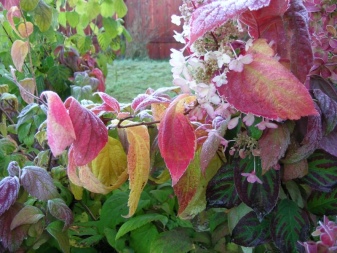
Peculiarities
Japanese spirea "Macrophylla" is a beautiful plant with bright foliage that changes color depending on the season. It has large, airy leaves that are 20 cm long and 10 cm wide. The bush can grow more than a meter in height and one and a half meters in width, adding up to 25 cm per year. Very unpretentious, belongs to the group of summer-flowering shrubs. Flowering begins in the third year of the plant's life from mid-summer and lasts until early autumn. The flowers are light pink in small panicles. Against the background of bright leaves, their delicate appearance is quickly lost. In June, the color of the leaves can be bright red or purple, in July - green, and closer to autumn they have the most interesting yellow-golden hue. As already mentioned, it grows quickly, is not afraid of frost.
The foliage of the plant contains a component from which aspirin is produced.
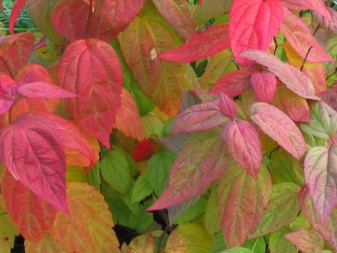
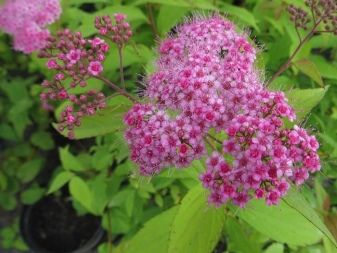
How to plant?
Planting spirea begins in the spring before the greenery blooms. In the summer, the plant will quickly take root and get stronger before the first winter.
Choose a sunny day, find a planting spot with good access to light in your garden. Around the future shrub must remain free at least a meter to other plantings, since the spirea grows strongly.
Dig a hole in the ground slightly larger than the root system of the bush. Shorten the root a little and remove the damaged parts. If the branches of the seedling are tall, then cut them off by one third.
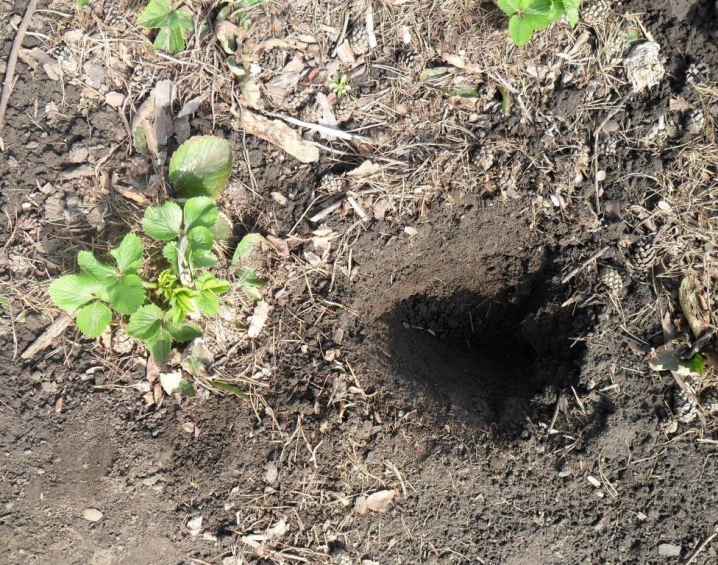
Make a small drainage in the depression - pour some rubble or expanded clay on the bottom. Add a mixture of sand, peat and earth on top. Place the seedling in the center, and sprinkle with earth without compacting. Pour well and sprinkle with peat on top.
All types of soil are suitable for this shrub. The main thing is that there is no lime content in them. Plant it in leafy or turfy soil so it will grow much more efficiently.
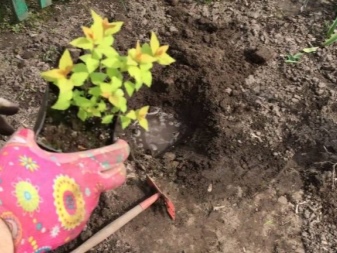
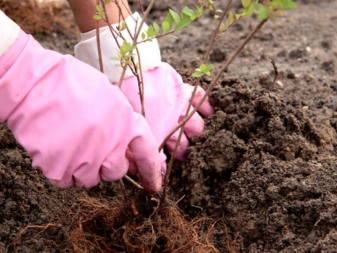
How to take care of it properly?
Spirea "Macrophylla" is a very unpretentious plant, it can be grown even by those who have never been involved in floriculture. It is easy to care for such a culture, but you need to adhere to some rules of care.
The roots of the shrub grow mostly in width under the soil without deepening. Therefore, watering should be regular and abundant, 15-20 liters once a week with warm water.
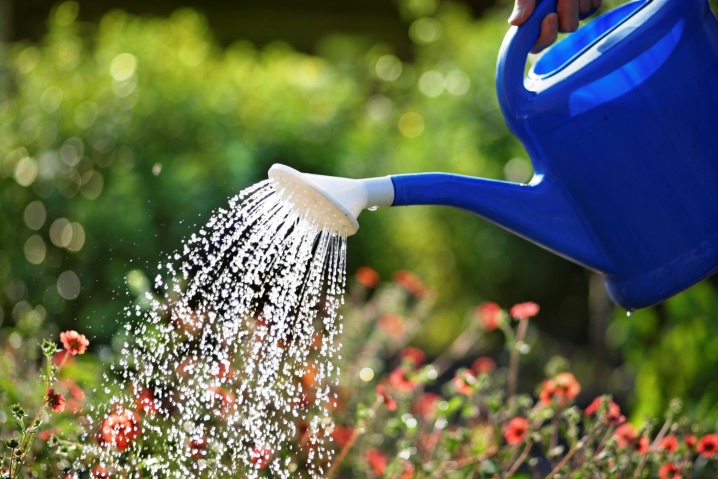
It is advisable to fertilize the soil with nitrogenous components starting in March. And in June and August, feed with organic and mineral substances. Lightly loosen the soil after each watering for better air access and control of small weeds.
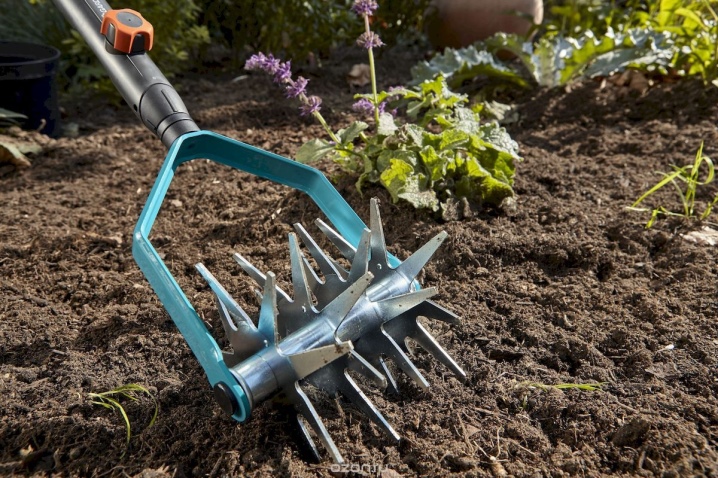
Pay special attention to pruning. The plant lives up to 15 years.To make it beautiful all this time, before the age of 4, cut off all the shoots up to 10 cm from the ground in the spring before the foliage blooms. After 4 years, carry out circumcision at the same time, but you can leave up to 30 cm of shoots. This procedure is carried out so that young shoots have a bright, beautiful color all summer. Do decorative pruning regularly. Remove shoots just below the root that interfere with the shape of the bush you have formed.
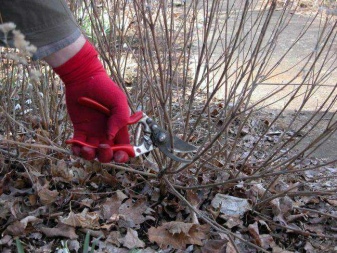
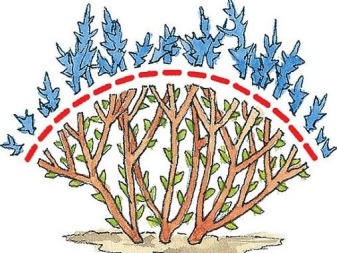
If winters in your area are windy and harsh, you can tilt the branches of the bush to the ground and fix them for the winter. Cover all this with a flooring of dry leaves or grass, sprinkle on top with a thin layer of earth. It is not necessary to cover shrubs for the winter if the climate in your winters is moderate.
Reproduction methods
Spirea "Macrophylla" can be propagated in several simple ways that any inexperienced gardener can do - spirea takes root very well.
Seeds
This method is the longest and most painstaking one. With this method of propagation, the characteristics of the variety may not be preserved. In the spring, the seeds are planted in fertilized peat-earth soil. Cover with foil. Around June, seedlings will sprout, which can be transplanted into a stationary place where the bush grows. In order to accelerate the growth of the spirea, the root can be pinched before planting. After 3 years, the spirea will begin to bloom.
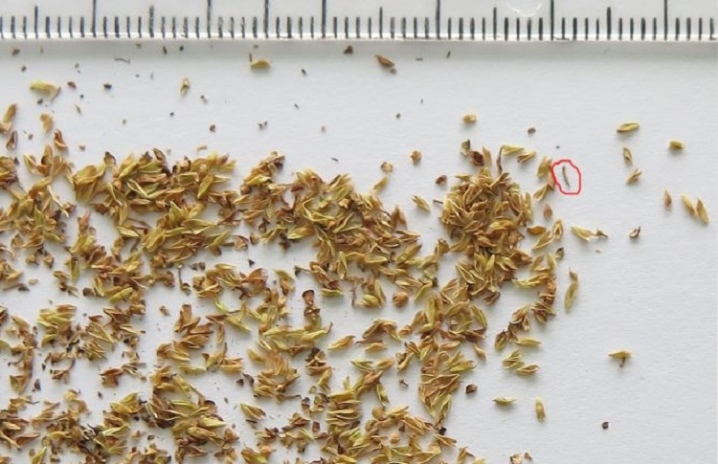
Layers
The fastest and most reliable way. To do this, in the spring, when the first leaves appeared, it is necessary to find several free branches from the side. Bend them to the ground, secure with pins, and sprinkle with a small layer of soil. At the same time, there should not be too much moisture in the soil for bent layering - they can rot from its excess, therefore it is important to control its level until autumn. When preparing for winter, the layers must be covered with foliage or hay. When they have roots, they can be planted in a designated place for self-growth.
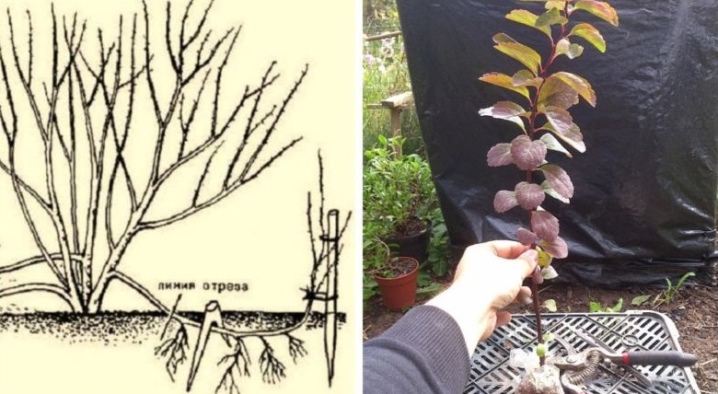
Dividing the bush
For this breeding method, mature shrubs that are at least 4 years old are suitable. In the fall, after the leaves fall off, the shrub must be carefully dug up and the ground removed from the roots. Rinse the rhizome and divide so that 4 long shoots remain on each part. Each part can be planted already in winter, but the shoots must be cut to 10 cm from the ground. Thanks to this, they will root well and get stronger.
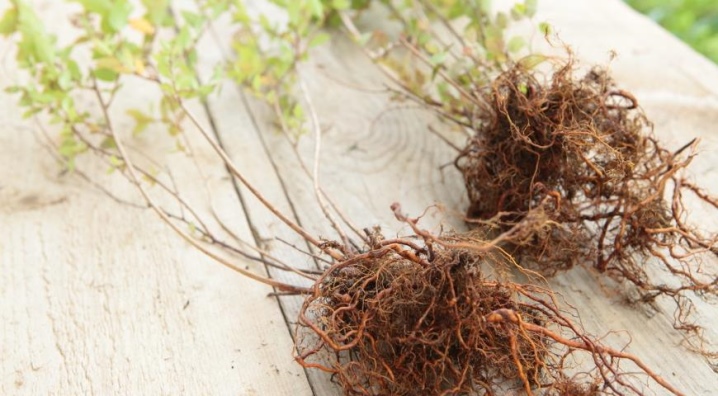
Cuttings
To do this, take the shoots of the current year from the upper or middle part of the bush. Cut a stalk 10-15 cm high, so that 4 leaves remain on it. For a day, you need to leave them in water or a special stimulating solution. Cuttings are planted under a film or jar so that there is a greenhouse effect. The soil should consist of wet sand and earth in a ratio of 1 to 1. It is better to do this in July, so that the root system is formed by autumn. Insulate the cuttings for the winter, sprinkle with a thick layer of leaves and earth, and in the spring, transplant to the designated stationary place.

Diseases and pests
The shrub is very resistant to diseases and pests. But if it's a hot summer or drought, a leafworm may start on it. She eats the leaves, they become weak, and the bush may die. To destroy the pest, use the drugs "Decis Profi" or "Fitoverm".
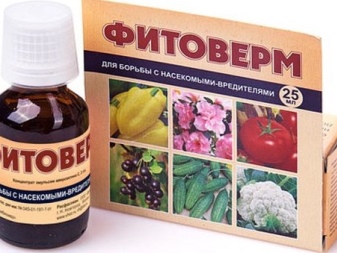

Aphids can attack spirea all summer long, especially if it's rainy. From aphids, the leaves will begin to curl up, as the pests suck the juice from the plant. Remove any damaged leaves and spray the bush with insecticide.

Dispose of fallen leaves from under the bush. There, female spider mites usually start up, which then climb onto healthy shrubs. They live under a leaf, and you can not immediately notice them. When the leaves begin to turn yellow and dry, only then can this pest be identified. In this case, remove the affected leaves and treat the foliage with the Acrex solution.
If you have a lot of humus in your soil, then most likely May beetles live there.The larva of this beetle is very dangerous; it kills the roots of the spirea.
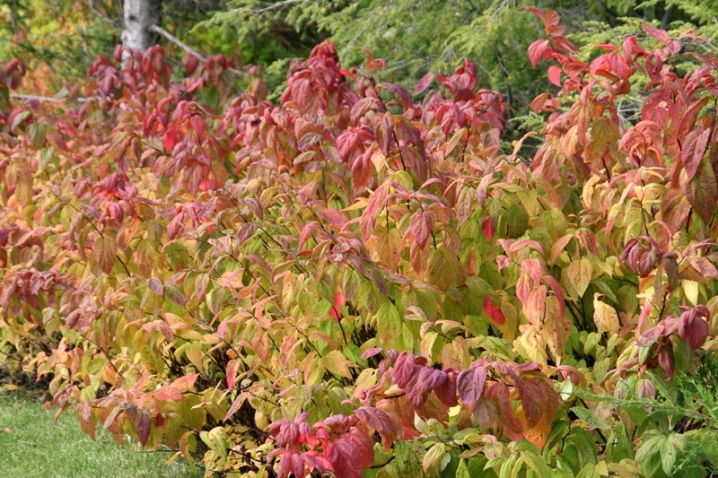
Whitefly and blue meadow sawfly are considered the most dangerous pests for spirea. For the fight, copper sulfate and a solution of laundry soap are used. If these remedies do not help, it is better to get rid of the shrub so that the infection does not spread to healthy plantings. Treat the infected area with Bordeaux liquid, and refrain from planting any planting on this place for a couple of years.
Take regular preventive measures to keep pests out.
In April and September, spray the bush with any insecticide. Remove dry grass and kill weeds. Loosen the soil as often as possible.
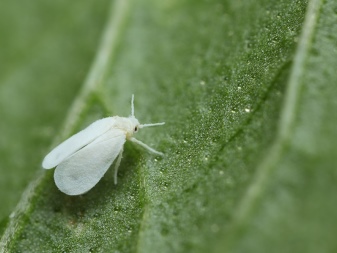
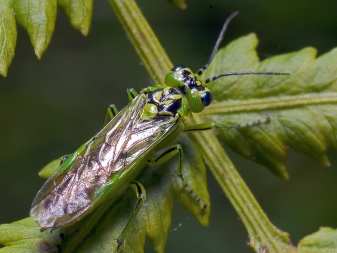
Use in landscape design
Since the spirea "Macrophylla" has a pronounced foliage, both an individual planting and a group planting are suitable for it. With excellent honey plant quality, it will be a bee lure in your garden. You can decorate borders with it.
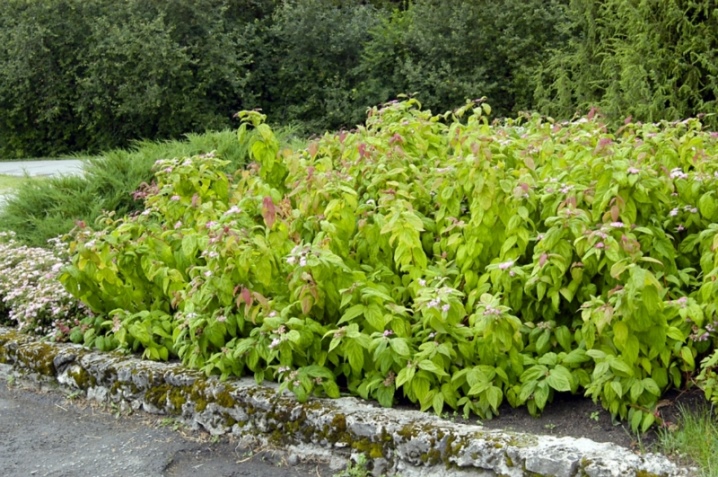
If you have a fountain, plant it next to it. This will create a wonderful humid climate spirea and at the same time decorate the area near the water cascade.
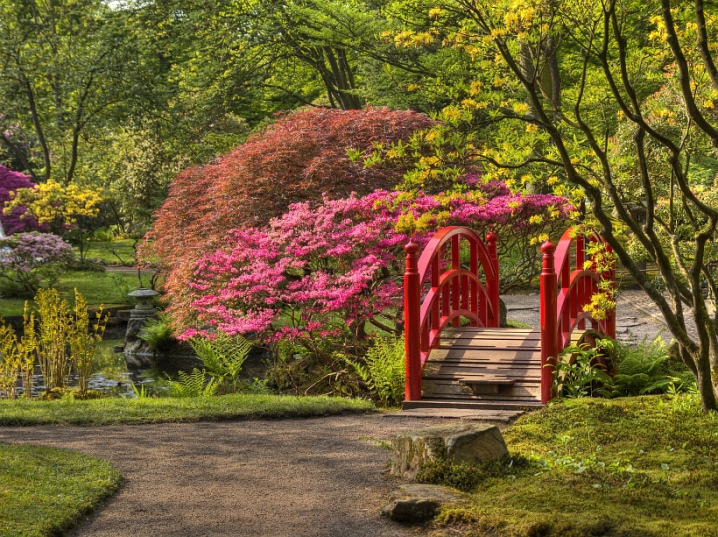
This colorful shrub looks interesting among the conifers: pyramidal thuja and juniper bushes. Its bright color will dilute the greenery of conifers. Create a hedge around your home.
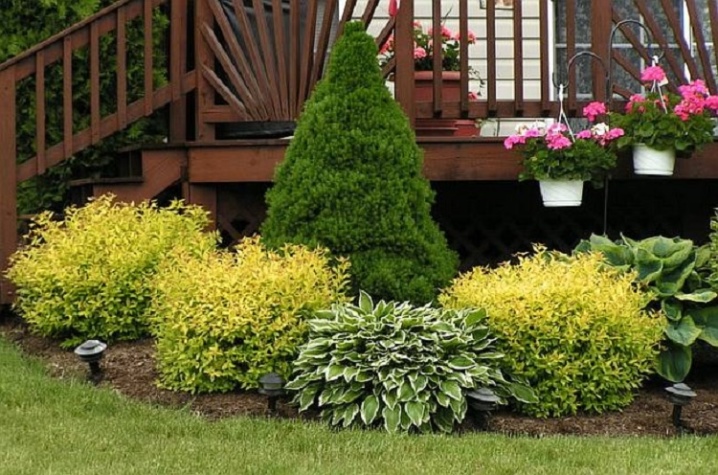
Possessing a delicate aroma, spirea will always remind of itself. You can decorate city parks and kindergartens with it. Spirea bushes planted near city benches will create a kind of shadow with their volume.

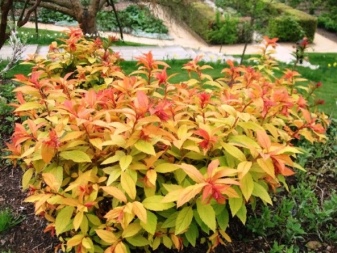
Spirea is ideally combined with huge boulder stones. Decorating country cafes and hotels with spirea would be appropriate. The classic look of spirea will complement and emphasize the beauty of other herbaceous plantings.
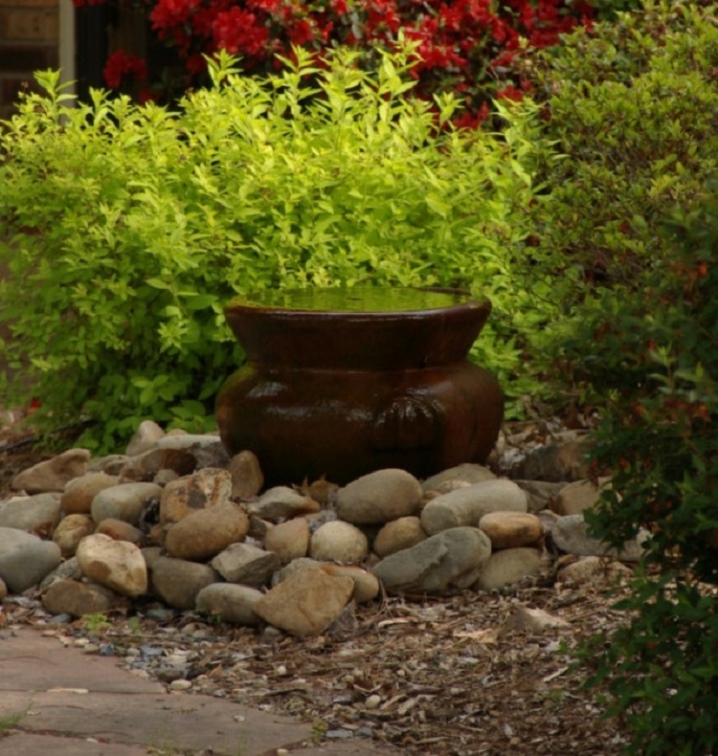
Using "Macrophylla" as a companion among tall deciduous trees will add a special charm to the plantings. After all, the shrub lends itself well to cutting, it can be given any shape in the form of a ball, a triangle.
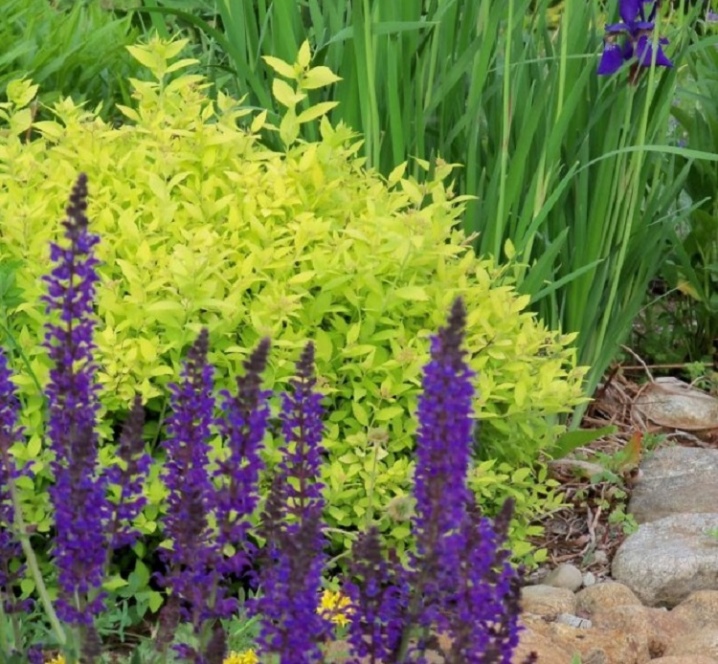
Choosing a Japanese spirea to decorate your garden, you will always experience a sense of pleasure and celebration when this perennial, bright decoration appears before your eyes.
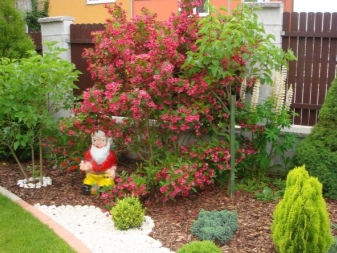

Trimming the spirea in the video below.



































































The comment was sent successfully.